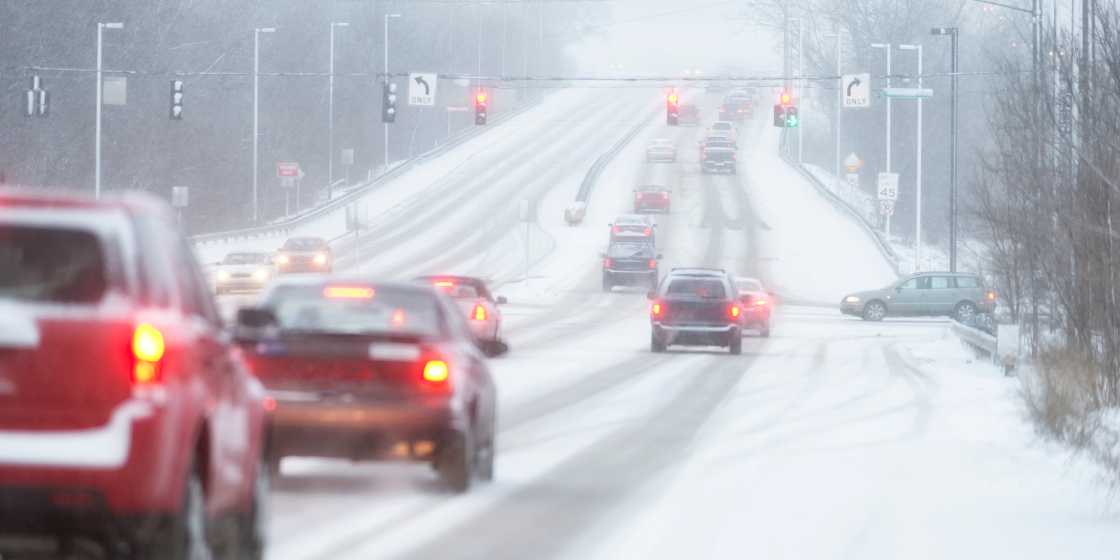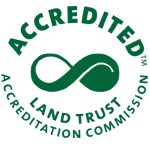Being Salt Smart means using winter deicing salt responsibly to minimize its negative impacts. This approach ensures that we maintain winter safety while protecting waterways, landscaping, pets, infrastructure, and even our wallets.
In this article, we’ll explore the reasons why to be Salt Smart and give tips for being Salt Smart at home this winter.
The WHYs: Reasons to be Salt Smart
There are many reasons why being Salt Smart is a great option for managing snow and ice. What’s your WHY?
Safe Roads and Walkways
Salt Smart practices are the best practices in winter maintenance. A Salt Smart approach uses deicers and snow removal techniques efficiently to create safe roads and pathways. Because standard practices tend to overuse salt, we can easily use less salt without sacrificing safety.
Clean Water
Excess winter salt can pollute nearby waterways, creating poor water quality and harming aquatic ecosystems. Because Salt Smart practices minimize chlorides entering rivers, streams, and ponds, being Salt Smart protects clean water in our local water bodies.
Healthy Landscaping
Being Salt Smart also helps your lawn and gardens. Deicers often bounce into vegetation next to roads, driveways, and sidewalks. Salt damages plants and accumulates in the soil. Using the right amount of salt preserves your landscaping.
Happy Pets
Our pets are also affected by salt. When they walk on salt-covered surfaces, salt can irritate their paws and potentially make them sick when they lick it off. Reducing salt usage at home supports your pet’s safety and well-being.
Lasting Infrastructure
Salt corrodes infrastructure and vehicles, eventually leading to costly repairs. Being Salt Smart improves the lifespan of cars, roads, bridges, doorways, and more.
Less Waste
Outdated salting techniques overuse salt, which wastes money and unnecessarily harms the environment. Using Salt Smart practices minimizes waste and saves money, especially for large-scale municipal and business snow removal operations.
Tips for Being Salt Smart at Home: Winter Maintenance Without Overusing Salt

Once you have your WHY, it’s easy to put responsible snow removal and salting into practice. Here are ways you can be Salt Smart at home:
- Before you reach for the salt, remove snow and ice first. Depending on the conditions, use a broom, shovel, snow blower, or ice scraper. Remove snow as soon as you can, before it gets compacted and turns into ice.
- Use the appropriate amount of salt to melt snow and ice. You need much less deicing salt than you think! In fact, a 12-ounce cup of salt is enough to cover 10 sidewalk squares. Scatter salt with space between granules. Salt Smart application rates work to melt ice just as well as an overuse of salt.
- Only scatter salt where needed. Prioritize areas where you and guests walk and places that tend to be slippery, such as steps.
- Save on salt with brine! Brine is a mixture of rock salt and water. Because of the water content, brine starts working right away to melt snow and ice. It can also be applied before a storm, to prevent snow from bonding to the pavement, making for quick clean-up. Brine is easy to make at home. Because brine is only 23% rock salt, you reduce the amount of salt needed to cover the same area than if you use rock salt alone.
- Be mindful of cold temperatures. Below 15 degrees F, rock salt or sodium chloride will not effectively melt snow and ice. At cold temperatures, switch to a deicer blend that includes calcium chloride or magnesium chloride.
- Prevent icy patches from forming. Point downspouts and sump pumps away from driveways and paths.
- After snow and ice have melted, sweep up extra salt to use later. Extra salt gets into landscaping and storm drains. Sweep and collect excess salt to protect the environment and prevent waste.
- Help plow drivers clear roads easier. If possible, stay home during snowstorms to let plow drivers plow first. If you have to drive, go slowly and give plows plenty of room on the road. To help snow plow drivers clear your street quickly and effectively, move trash bins and parked cars off your street.
Let’s face it. We all have different priorities. You might be concerned about chlorides entering local streams while your neighbor cares more about protecting her dog’s paws. Whatever your WHY, thanks for doing your part to be Salt Smart!



